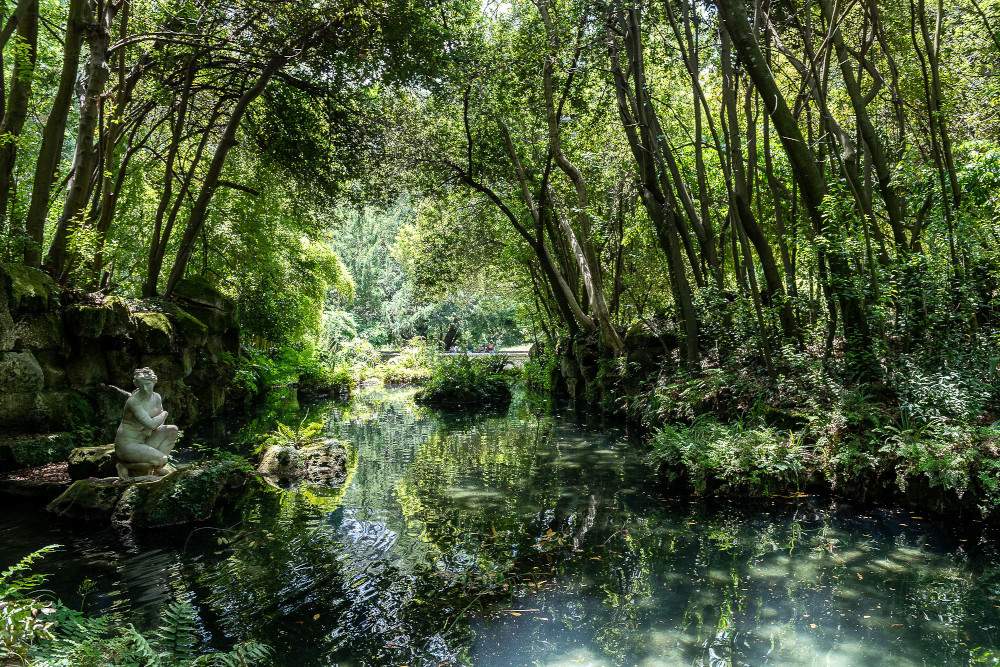The Royal Palace of Caserta dedicates a major exhibition to the history of the garden, with two hundred works
The Royal Palace of Caserta presents from July 1 to October 16, 2022, the exhibition Fragments of Paradise. Gardens in Time at the Reggia di Caserta, curated by Tiziana Maffei, director of the Reggia, Alberta Campitelli and Alessandro Cremona.
About two hundred works including paintings, drawings, sculptures, herbals, books and art objects and contemporary interpretations intended to tell the story of the garden will be on display. From the complex of the Royal Palace of Caserta, themes and events unfold by relating villa and garden systems from across the peninsula, from the Renaissance to the early 19th century. The result is a kaleidoscope of representations that, in the diversity of landscapes, cultural patterns and lifestyles, aim to evoke, through contact with nature, thelost Eden.
The exhibition project also traces the history of the garden in a broad sense. Present in the human imagination throughout the centuries and various civilizations, it has developed different compositional models: the formal designs of the Italian or French style gardens and the freer one of the English model, in parallel with the evolution of botanical science, correspond in fact to the different cultural contexts of which they are an expression.
The various sections that make up the exhibition will feature numerous works, in many cases unpublished, from prestigious Italian and European museums and institutions, as well as private collections, libraries and other public institutions. Among the many artists are Gaspar van Wittel, Claude Lorrain, Paolo Anesi, Pietro and Gianlorenzo Bernini, Hubert Robert, Hendrick van Cleve III, Jules-César-Denis van Loo, Giusto Utens, Joseph Heintz the Younger and other famous vedutists; a prominent role belongs to Jacob Philipp Hackert, who devoted many works to the gardens and landscapes of Campania and southern Italy. The sections develop the themes that unfold from the Royal Palace of Caserta and its history, juxtaposing and comparing what was produced by other patrons and other contexts:
- the Royal Palace of Caserta and its models, with the famous depictions of the Royal Park of the Palace of Caserta placed side by side with those of the gardens that Charles and Maria Amalia knew and experienced in their home countries and that shaped their taste;
- the relationship between garden and landscape highlighted in the views of well-known gardens ranging from Campania to Lazio, Marche, Tuscany and Piedmont, interpreted by the major artists of the periods considered;
- gardens as scenography to make explicit how the display of power, festivals, theater, have always had gardens as a privileged backdrop, adapted and declined according to the functions they accommodated;
-water as the spectacular protagonist of plays, fountains, and waterways, but also a privileged overlook along lakes, rivers, and the sea;
- garden and wilderness in which woods and estates are exalted to complement villas and gardens, from the tradition of Medici gardens to the 19th century;
- gardens as settings for sacred and mythological narratives, from the depiction of the “gardener” Christ to mythological or literary episodes and allegories of the seasons, such as those of Pietro and Gianlorenzo Bernini;
- botany in the garden, plant elements as protagonists with different roles and functions related, for example, to tulipomania or the introduction of exotic plants and the rise of botanical science.
The exhibition is the result of in-depth scientific research conducted by scholars and specialists in the field to offer a reflection on this area of our heritage. It also aims to promote greater awareness of the importance and value of this most fragile and precious heritage in its being the result of man’s harmonious interaction with nature. The exhibition is also an opportunity to experiment with the languages of the contemporary with Fondazione Kainon, a technical partner, through the virtual reconstruction of a first part of the garden imagined by Luigi Vanvitelli in the Declaration of Drawings and the punctuation of contemporary artists who freely interpret the concept of the garden as a possible Paradise.
The exhibition, organized by the Museum of the Royal Palace of Caserta with Opera Laboratori, has an international scientific committee and contributions from the Botanical Gardens of Naples and Portici. The initiative is organized in partnership with the Caserta Chamber of Commerce and with the support of Friends of the Royal Palace of Caserta, Colonnese&Friends, Associazione Parchi e Giardini d’Italia, Grandi Giardini Italiani and European Route of Historic gardens.
Image: English Garden of the Royal Palace of Caserta with detail of the Bath of Venus.
 |
| The Royal Palace of Caserta dedicates a major exhibition to the history of the garden, with two hundred works |
Warning: the translation into English of the original Italian article was created using automatic tools. We undertake to review all articles, but we do not guarantee the total absence of inaccuracies in the translation due to the program. You can find the original by clicking on the ITA button. If you find any mistake,please contact us.



























